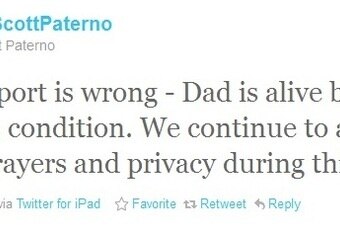
secondly there is annual planning and simulation, building tools and processes that help ensure cross-stakeholder expectations are being used as core criteria in developing and testing business plan priorities and specific programs and initiatives Thirdly, there is focus on cross-functional management, managing corporate reputation across business and functions, based on clear priorities, responsibilities and Key Performance indicators (KPIs). Firstly there is collaboration and relevance, ensuring that corporate reputation strategy is more than a tagline and enabling multiple internal stakeholder groups to do their jobs better. There are four specific focus areas that organizations need to account for, and invest in, to develop the right competencies to ensure that reputation risks are adequately addressed and mitigated.

However, a corporate narrative should be thought of as a life preserver in troubled waters that needs to ensure adequate reputation management and accountability safeguards are implemented before it is deployed far and wide. This usually happens when the new corporate narrative is seen as more of an image campaign or a response to an industry or a company shortcoming - in other words, an irresistible chance to play offence with your firm’s reputation capital. Once the corporate narrative is developed, there is often the temptation (not to mention a host of examples across the G20 markets) to move immediately into integration mode in order to activate the corporate narrative and use it liberally across internal and external touchpoints (think paid, earned, shared and owned channels). We define a corporate narrative as a defined set of messages that build internal alignment around the current business environment, corporate values and business strategy along with external relevance around how a guiding idea can safely deliver three to four reputation promises across multiple stakeholders and geographies. The next step is often the creation of a corporate narrative as part of a comprehensive reputation strategy. The 2008-2009 global financial crisis helped to crystallize the need for most companies to align their leadership behind an integrated company purpose, and a refined definition of their stakeholder map beyond the ‘Holy Trinity’ of customers, investors and employees.

However, integrating a corporate narrative (the why, what and how of an organization’s call to action) deep into an organization has profound implications on reputation risk assessment and mitigation.Ĭreating the business rationale for active reputation management is a crucial first step for most multinational organizations on their reputation journeys. The best corporate narrative can properly align your organization’s vision for the future, its current capabilities and your performance on rising stakeholders expectations from the workplace to the marketplace. In the reputation economy of the 2010s, leading organizations have realized that enhanced corporate storytelling about enterprise-wide values and behavior trumps narrow product feature and benefit messaging. Jby John Patterson in Reputation Management 0 Turning Your Corporate Narrative Into A Reputation Risk Mitigation Toolbox.


 0 kommentar(er)
0 kommentar(er)
